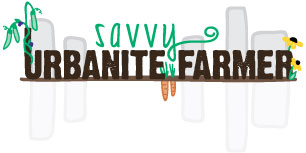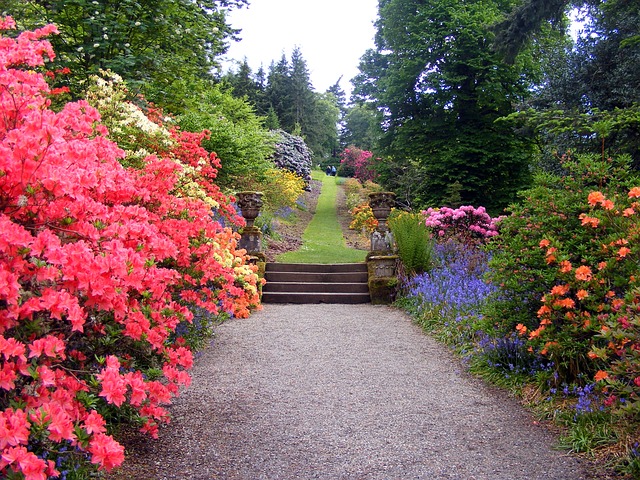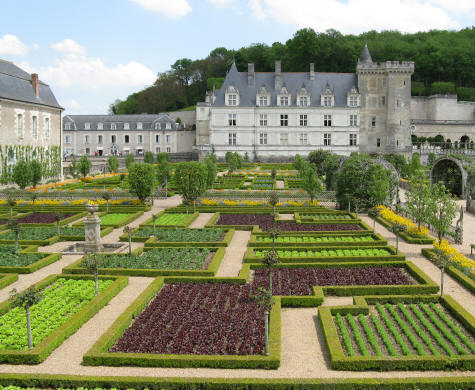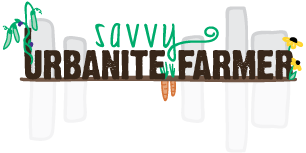In the first part of the Elements of Landscaping we looked at how to tell your story using lines to create a flow, colour to create emotion, and unity, form, and texture to help create an atmosphere. In this part we look at the elements to that deal with the layout of the entire story and how it can help you tell the most impressive story you can. If you haven’t read part one yet, read it now. I’ll wait.
Now, the story continues with balance, perspective, and themes. As in writing, these elements are necessary to hold your story together and create the look and feel you want.
Balance
There are two basic types of balance to landscaping: formal and informal. The image below has both informal and formal balance.
The formal balance comes from the overall landscape. Note how each square is similar with the hedge border. Inside of each square is a tree and many smaller plants. The informal balance is inside of each individual square. It is asymmetrical with the height of the tree and plants, but the balance lies in that the mass of plants balance each other. Having the same mass of plant material, regardless of shape and size on either side of a “line” an illusion that strikes an informal balance that also pleases the eyes.
Savvy Tip: Formal gardens require a lot of maintenance, but they can tell powerful stories.
Perspective and Scale
 Take a second look at that picture, but this time look at the building in the background as compared with the trees and shrubs around it. The building itself is grand, but it is made to look even larger by the use of plants that stay low to the ground. The building wouldn’t look nearly as grandiose as it does if they had used giant shade trees that got up to 50 – 60 feet tall.
Take a second look at that picture, but this time look at the building in the background as compared with the trees and shrubs around it. The building itself is grand, but it is made to look even larger by the use of plants that stay low to the ground. The building wouldn’t look nearly as grandiose as it does if they had used giant shade trees that got up to 50 – 60 feet tall.
This optical illusion can be used on anything of any size to make it look larger or smaller, as you want. By using a variety of heights, you can achieve an optical illusion of your own. You can see how this might work in the miniature to the right. If the tree in the front of the cottage were smaller, it would make the cottage seem larger, and, if the tree were larger, it would make the cottage seem smaller from the outside.
From the story telling perspective, often times the use of many low trees and shrubs make a space seem more crowded, but peaceful. All the while the use of high plants give the illusion of action and movement.
Savvy Tip: The use of many high scale items in a small space can make the space seem smaller and cosier.
Simplicity, sequence, and variety
In every professional landscaping scene you’ll see a combination of simplicity while having variety. You’ll also see that the designer follows a sequence or theme to bring the entire story together in one space. The simplicity is mostly defined as keeping the whole scene “simple”. Using the Chateau above as an example, the simplicity lies in that the entire garden is made of boxes, and within those boxes a tree and low scale plants for balance. This theme is repeated over and over again, regardless of the size or shape of the actual box. Some are more rectangular, while others have a zig-zag in them for a little variety. Over all, though, the landscaping theme and design is pretty simple.
This example also happens to be sequence. More accurately defined, the sequence is what gives your garden design life. It pulls the eye from one form from another, whether that is the tree to the hedge to the low lying plants, as in this image, or any other element you choose to pull your story together with. This could be colour, texture, scale — any of these elements can help you create a sequence to draw the eye in along the story you are creating.
While the line draws the eyes up the path, the bursts of colour along the side offer a sequence of colours that draws you upward from the reds and yellows to blues further up the path. The simplicity lies in the flower, while the variety is the types of flowers, their shapes, and the occasionally greenery and statuary along the path.
This can be accomplished through the use of edibles, flowers, greenery, and statuary or other garden art. The key is to have fun telling your story.



